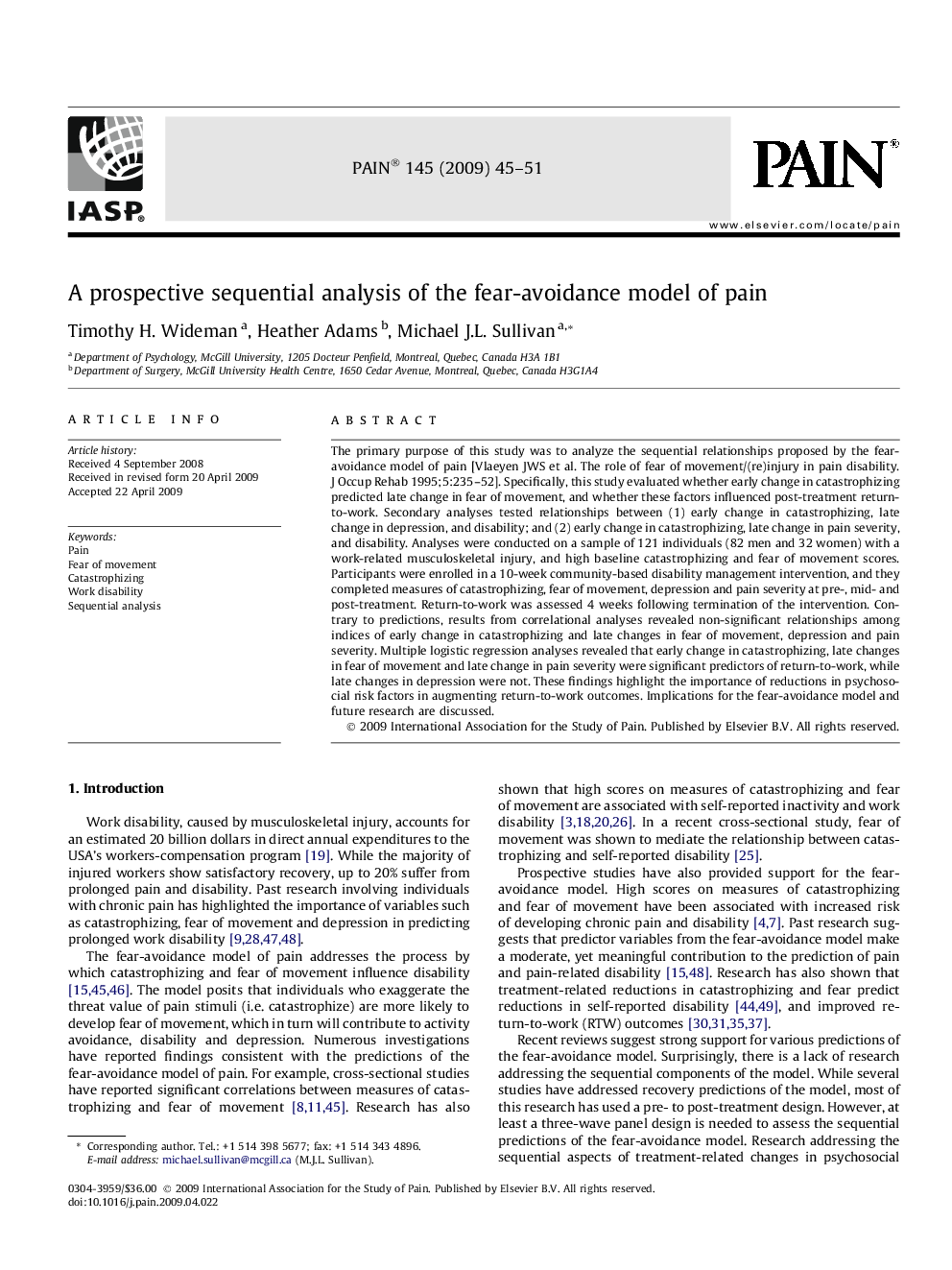| کد مقاله | کد نشریه | سال انتشار | مقاله انگلیسی | نسخه تمام متن |
|---|---|---|---|---|
| 7270741 | 1473241 | 2009 | 7 صفحه PDF | دانلود رایگان |
عنوان انگلیسی مقاله ISI
A prospective sequential analysis of the fear-avoidance model of pain
دانلود مقاله + سفارش ترجمه
دانلود مقاله ISI انگلیسی
رایگان برای ایرانیان
کلمات کلیدی
موضوعات مرتبط
علوم زیستی و بیوفناوری
علم عصب شناسی
علوم اعصاب سلولی و مولکولی
پیش نمایش صفحه اول مقاله

چکیده انگلیسی
The primary purpose of this study was to analyze the sequential relationships proposed by the fear-avoidance model of pain [Vlaeyen JWS et al. The role of fear of movement/(re)injury in pain disability. J Occup Rehab 1995;5:235-52]. Specifically, this study evaluated whether early change in catastrophizing predicted late change in fear of movement, and whether these factors influenced post-treatment return-to-work. Secondary analyses tested relationships between (1) early change in catastrophizing, late change in depression, and disability; and (2) early change in catastrophizing, late change in pain severity, and disability. Analyses were conducted on a sample of 121 individuals (82 men and 32 women) with a work-related musculoskeletal injury, and high baseline catastrophizing and fear of movement scores. Participants were enrolled in a 10-week community-based disability management intervention, and they completed measures of catastrophizing, fear of movement, depression and pain severity at pre-, mid- and post-treatment. Return-to-work was assessed 4 weeks following termination of the intervention. Contrary to predictions, results from correlational analyses revealed non-significant relationships among indices of early change in catastrophizing and late changes in fear of movement, depression and pain severity. Multiple logistic regression analyses revealed that early change in catastrophizing, late changes in fear of movement and late change in pain severity were significant predictors of return-to-work, while late changes in depression were not. These findings highlight the importance of reductions in psychosocial risk factors in augmenting return-to-work outcomes. Implications for the fear-avoidance model and future research are discussed.
ناشر
Database: Elsevier - ScienceDirect (ساینس دایرکت)
Journal: PAIN® - Volume 145, Issues 1â2, September 2009, Pages 45-51
Journal: PAIN® - Volume 145, Issues 1â2, September 2009, Pages 45-51
نویسندگان
Timothy H. Wideman, Heather Adams, Michael J.L. Sullivan,